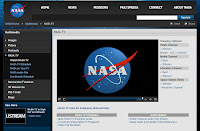On my quest to learn more about the last ice age I recently read Frozen Earth: The Once and Future Story of Ice Ages by Doug Macdougall. This 267 page popular science book is a great read. If you love going to museums and seeing the skeletons of the huge ice age mammals like mammoths and giant ground sloths, or get excited when you see a big boulder in a field where it doesn't seem to belong, than you will probably enjoy this, too.
Going into this book I knew some of the very basics about ice ages. An ice age is a period of time when permanent glaciers cover much of the northern hemisphere and when ocean levels are much lower. Ice a mile high covered my hometown, Syracuse, NY until something like 12,000 years ago. In fact, much of the geology in Central New York was shaped by that ice. Everything from the lakes and hills to the boulders and pebbles are remnants of the ice age. And, thanks to the fiction of Jean M. Auel's Earth's Children series, I have followed the lives of early hunter gatherers through the landscapes of ice age Europe.
What I really didn't know was the science, and this book was a great help. Mr. Macdougall's book is very accessible, well organized, and packed with good information. I must admit, though, I had to read it twice to try to remember half of what he wrote and I'm sure I could benefit from a third reading.
Frozen Earth starts with a summery of ice age science and reminds us that we are actually in an ice age right now. Yes, you read that correctly. The last ice age, the Pleistocene Ice Age is still happening. It started around 3 million years ago and has been characterized by cold and warm periods referred to as glacial and interglacial. The last 10,000 years have been an interglacial period. The last warm period during the Pleistocene Ice Age was around 120,000 years ago. If you live in a place that was covered by glaciers all those years ago, it might seem strange to think an ice age is still happening. If you live in Greenland, however, it might seem pretty obvious. The Earth still has glaciers, some of which are even pretty close to the equator. Probably all these glaciers have been there at least since the peak of the last glacial period 19,000 year ago. Of course, many of these glaciers are currently melting away due to climate change, but at least for now they remind us that the ice ages are not over.
Mr. Macdougall spends the bulk of the book taking the reader on a tour of the history of the science from the mid 1800's to the present day. We learn about Louis Agassiz, the first scientist to really develop and advance ice age theories. He was the one who got people looking at glaciers, stranded boulders, and the scratches on rocks that stand out as evidence for the ice ages. James Croll is one of the other scientists who's life we learn about, and who stands out to me. Agassiz convinced the world that the ice ages were real, but it is was James Croll in the 1860's who started to figure out their cause in the eccentricities of the Earth's orbit. The author does a great job taking the reader through the major innovations of ice age science. I already knew that ice cores were one way to study the climate of the past, but Mr. Macdougall impressed me with how it actually works. One thing I hadn't known about before was that scientists also drill for cores in the ocean floor. The author explains that too, as well as other methods of understanding the past climate.
So what causes an ice age? What Frozen Earth taught me is that a lot of factors contribute to an ice age. It seems that our Earth's orbit around the Sun, which has small changes over time due to the gravitational influence of the other planets, is perhaps the trigger for ice ages. But it doesn't work alone. The position of continents, the carbon cycle, the water cycle, methane in the atmosphere, the circulation of the oceans, all contribute. If you have looked into climate change science, these factors should sound familiar. They are the same ones that relate to climate change. The Earth is a dynamic place. Everything is interconnected.
Could the current man-made climate change end the Pleistocene Ice Age? This question forms the basis of the last chapter of the book. Judging from the duration of past interglacial periods of the last 3 million years, we are due for another glacial period. Geologic time scales are very long, so this may be another 10,000 years or more from now, but it should come. As the Starks from Game of Thrones would say, "WINTER IS COMING," and when it does much of North America and Europe will be under ice. But maybe it won't happen. Scientists don't know if it is possible, but it may be that humans, through climate change, will actually end the glacial cycles or put them off for a time.
In this review I have tried to give you an idea for the feel of the book and point out some of the things I thought were interesting. If I've piqued your interest, than please give the book a read. After all, I've only just scratched the tip of the iceberg.








